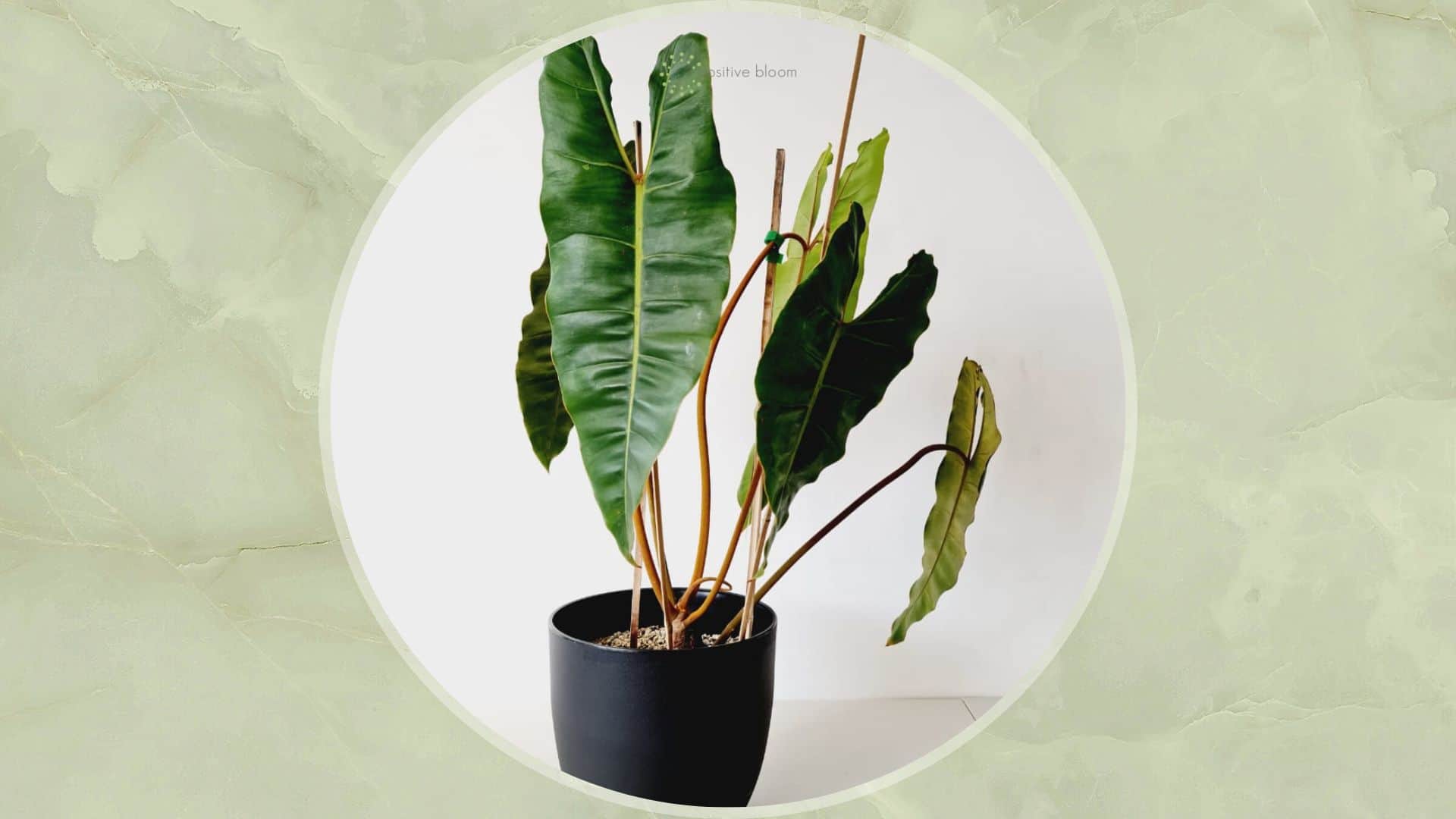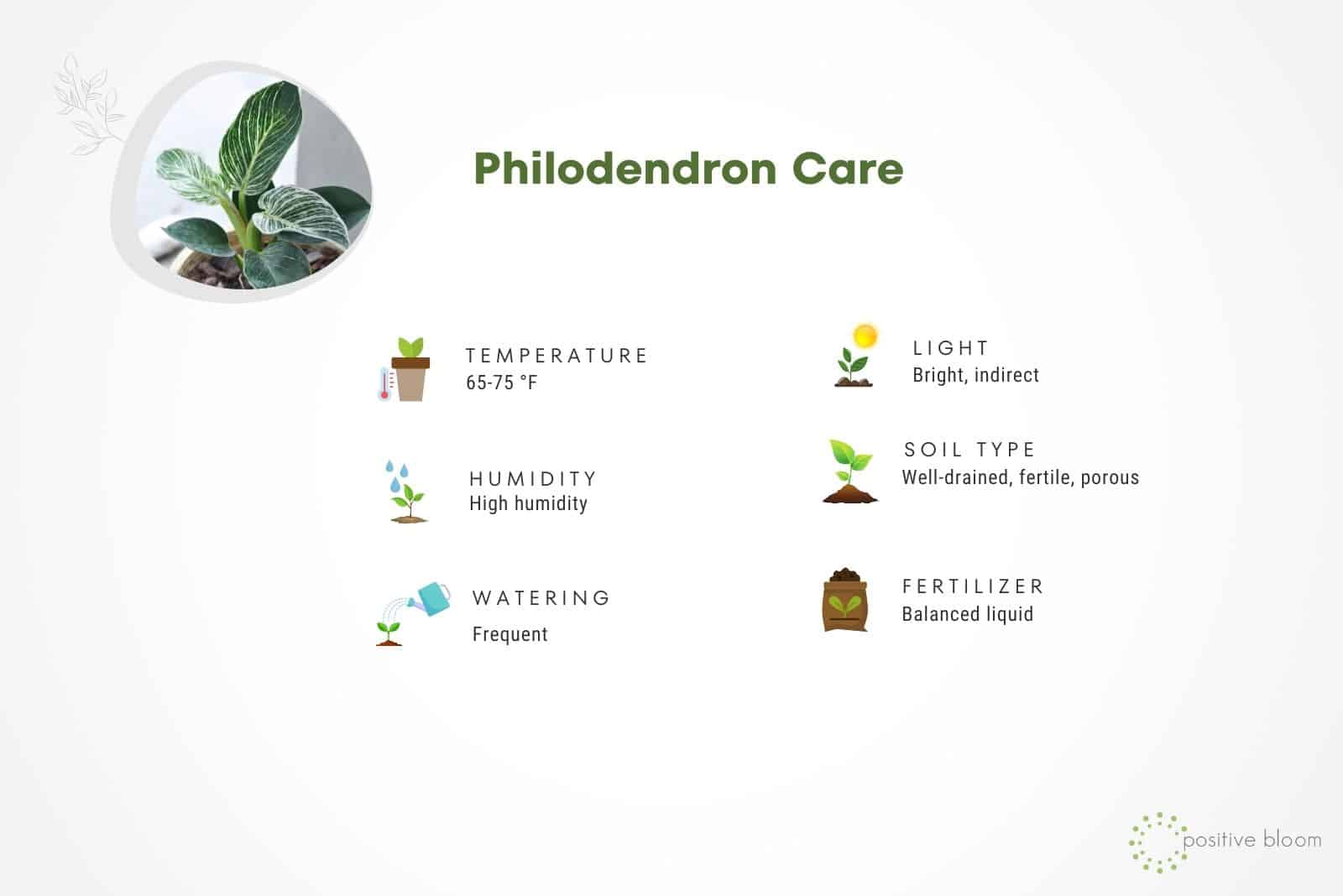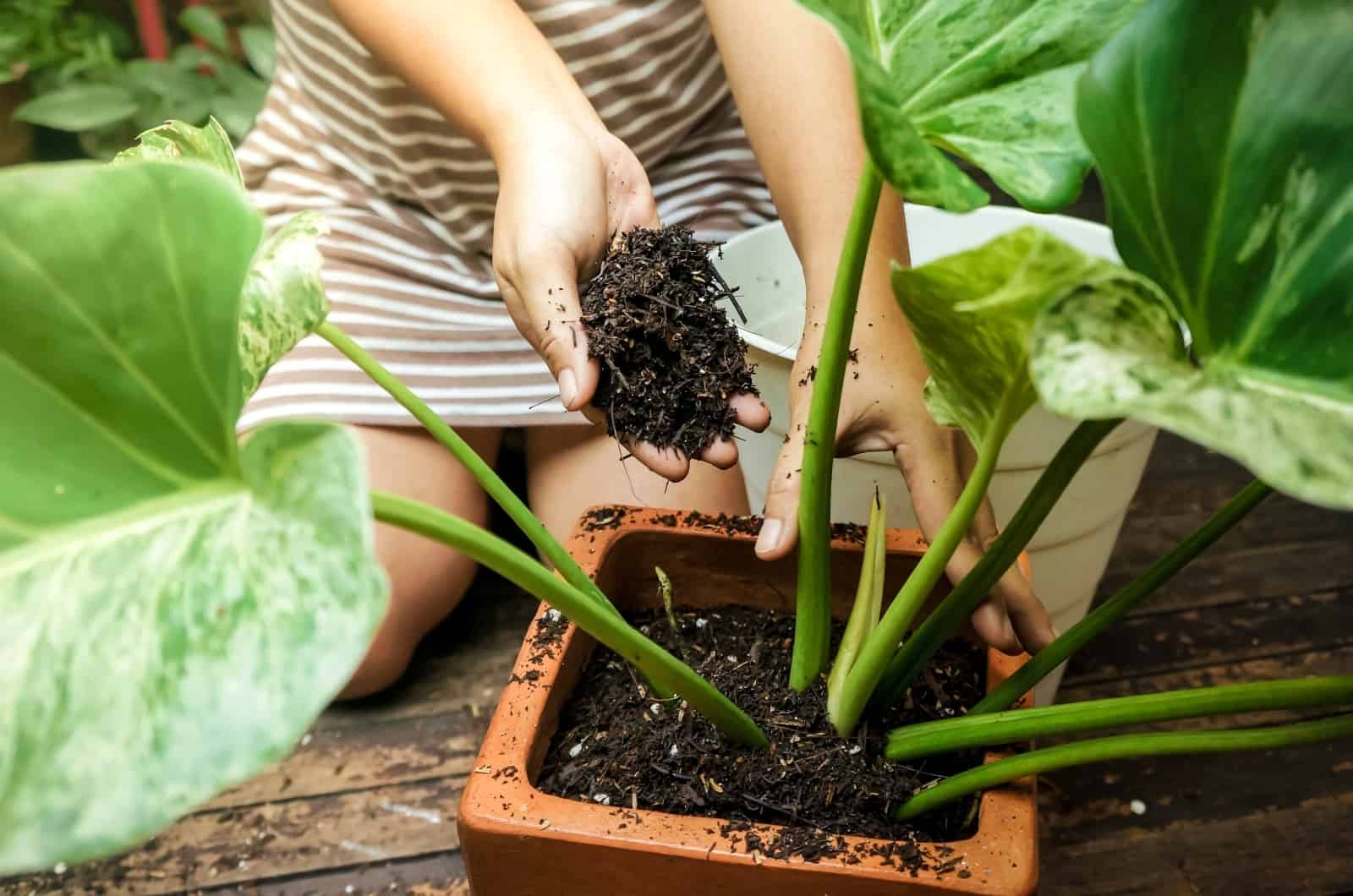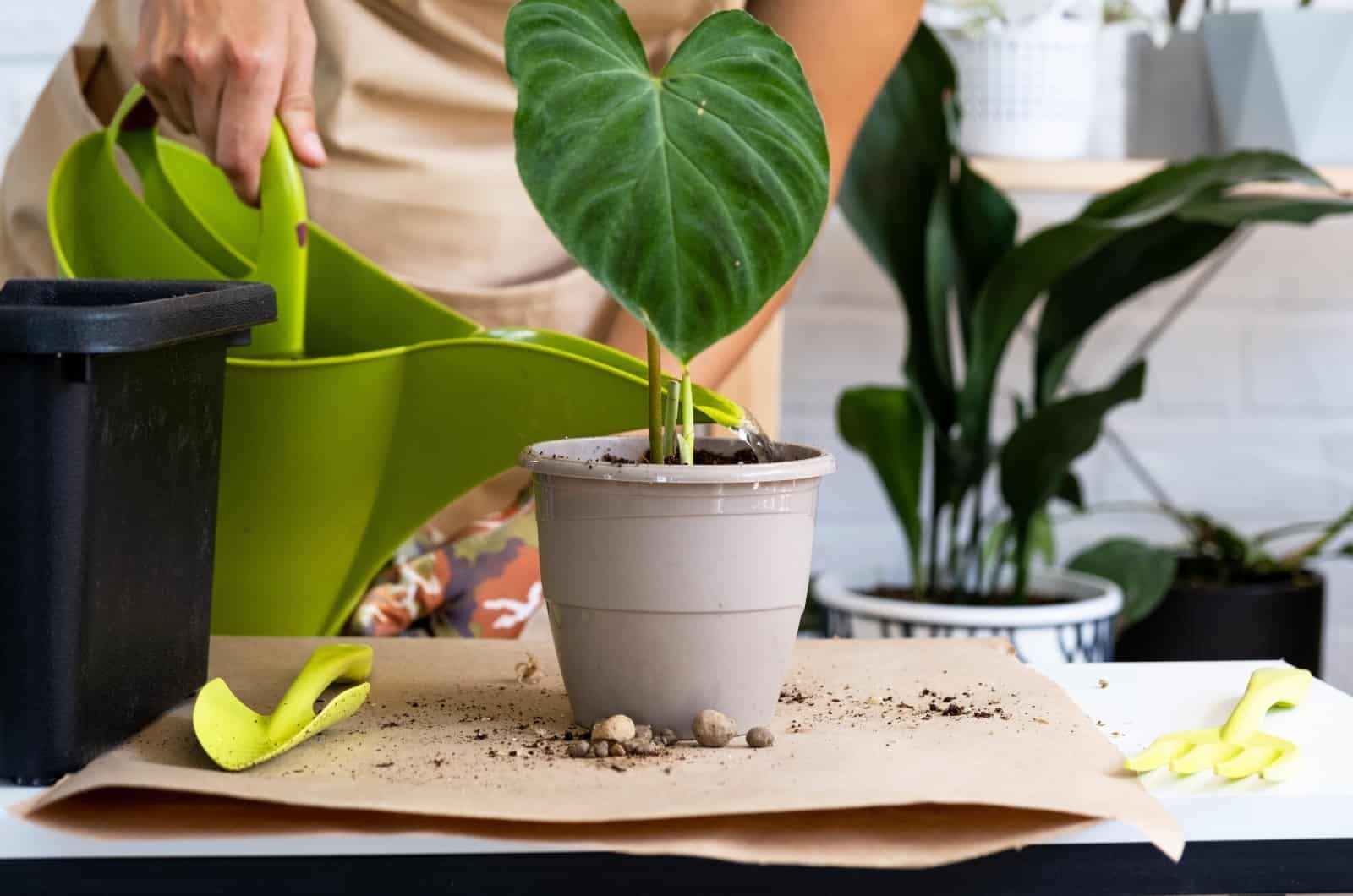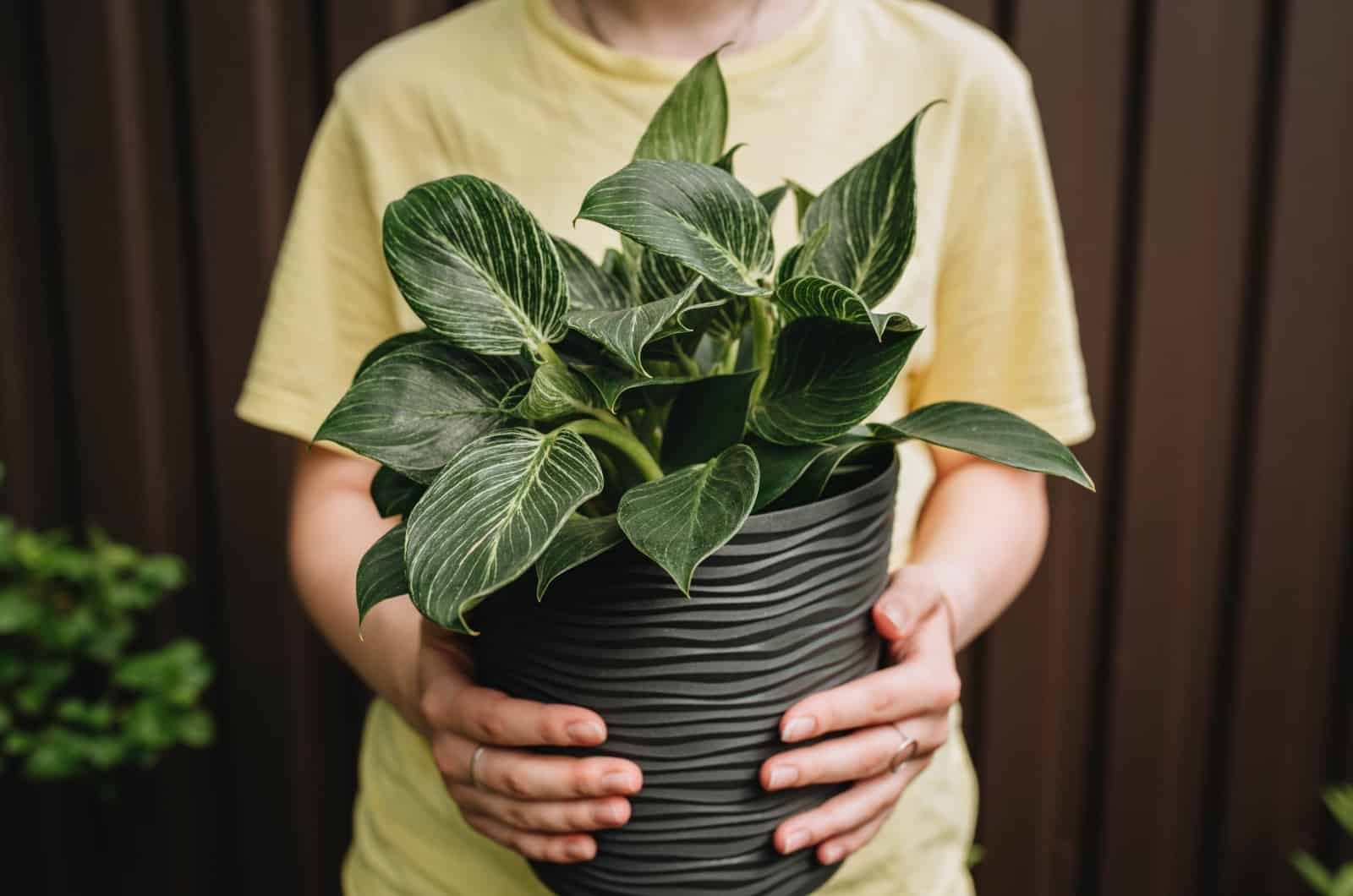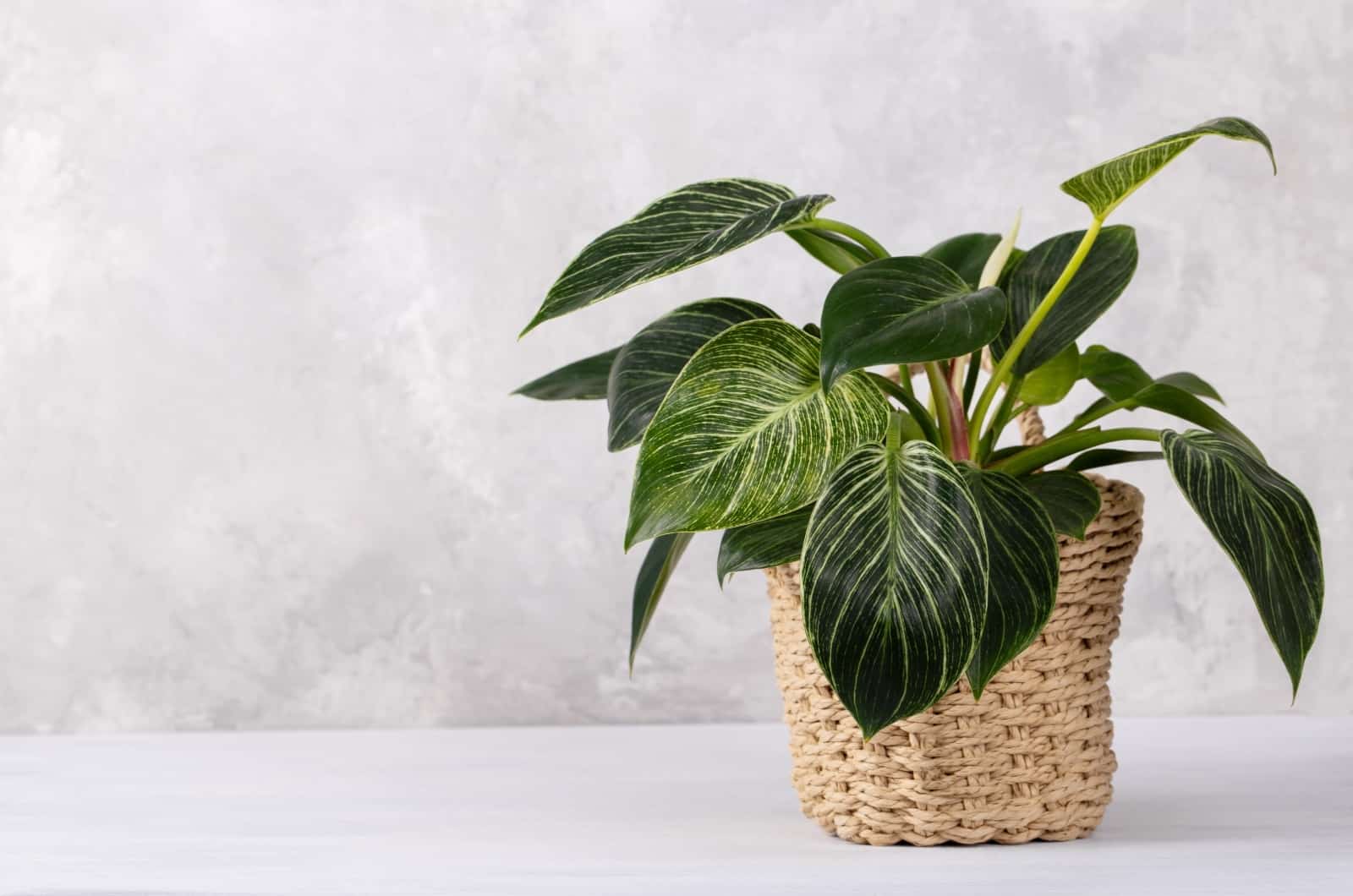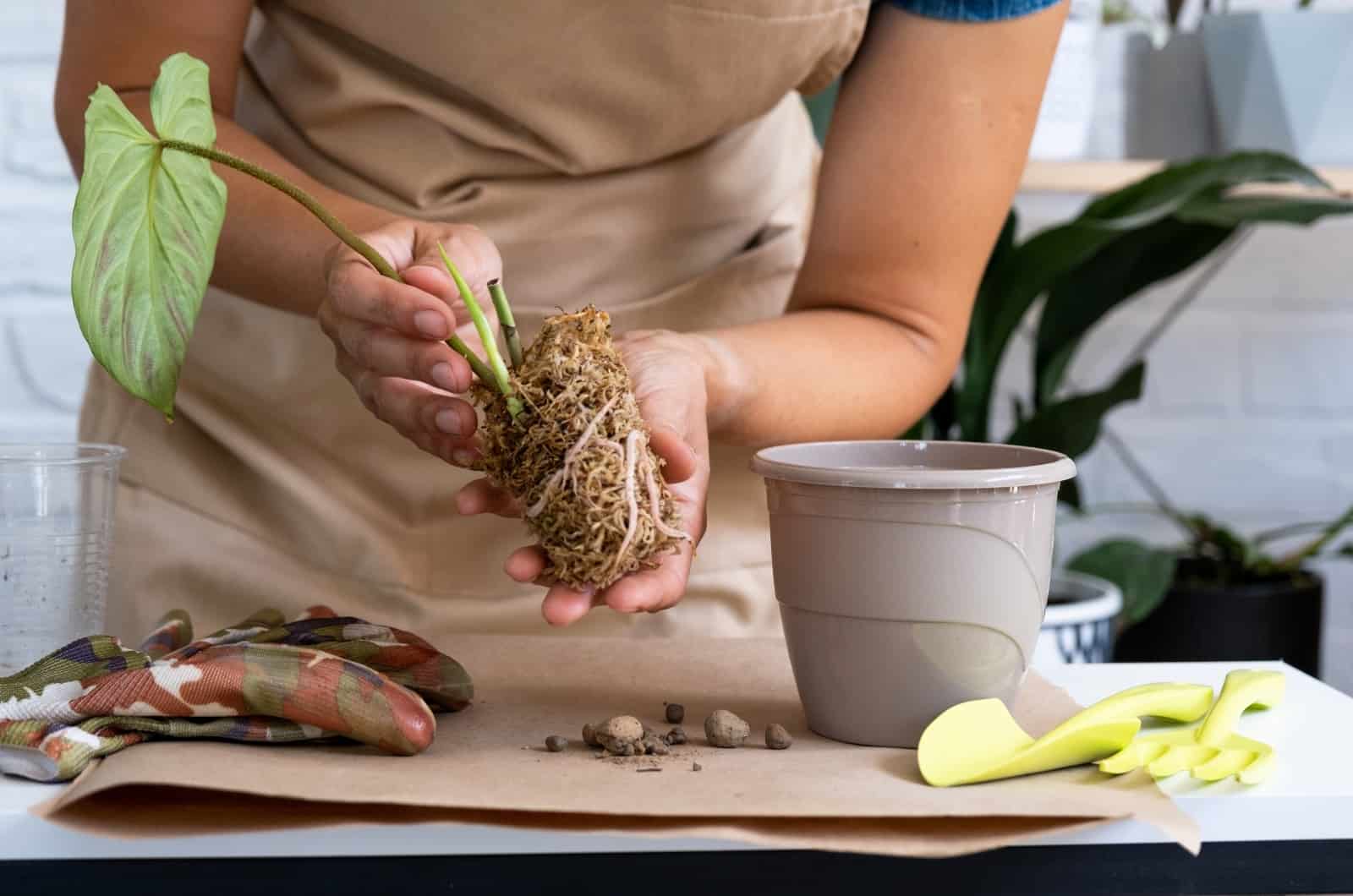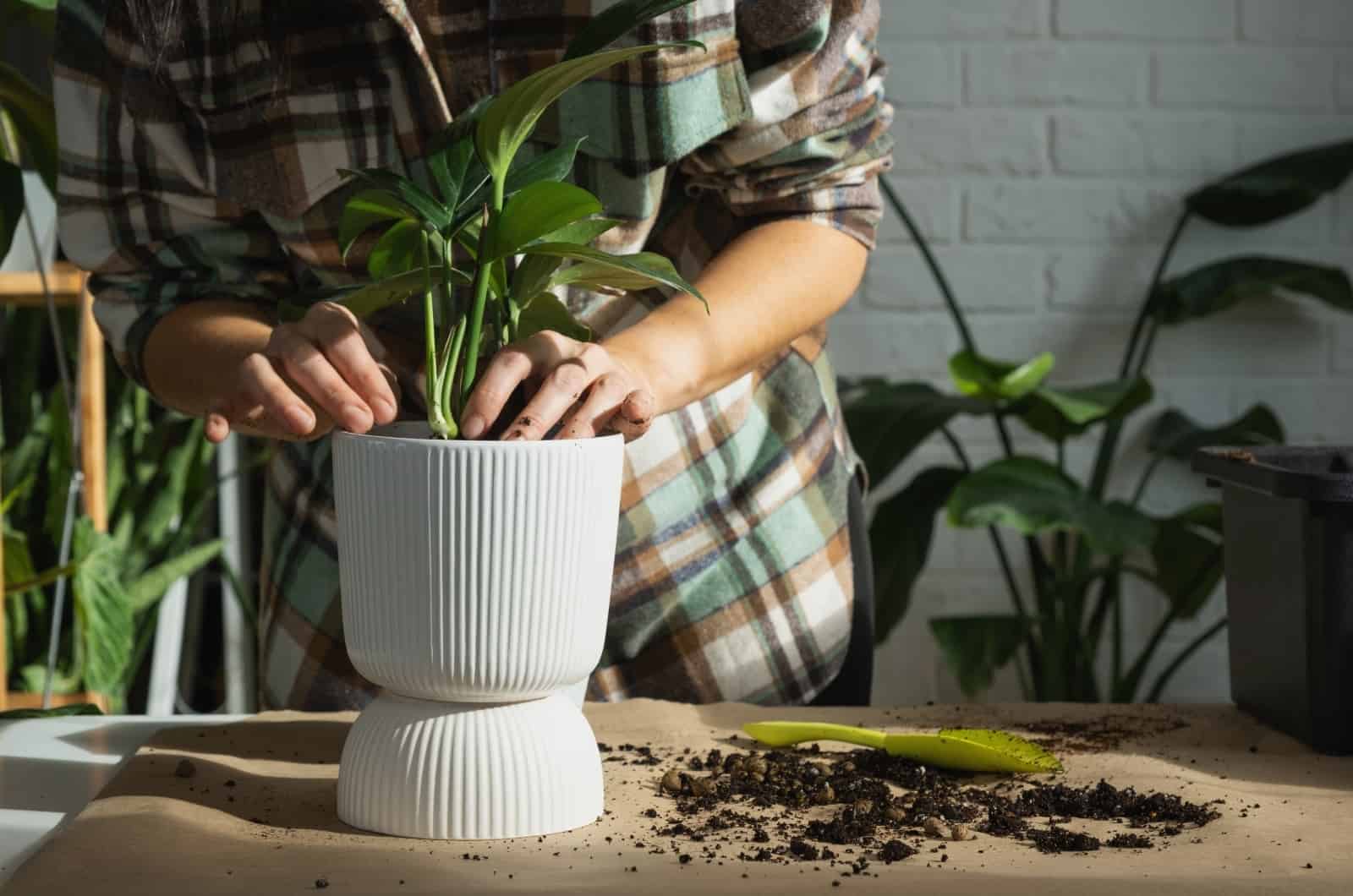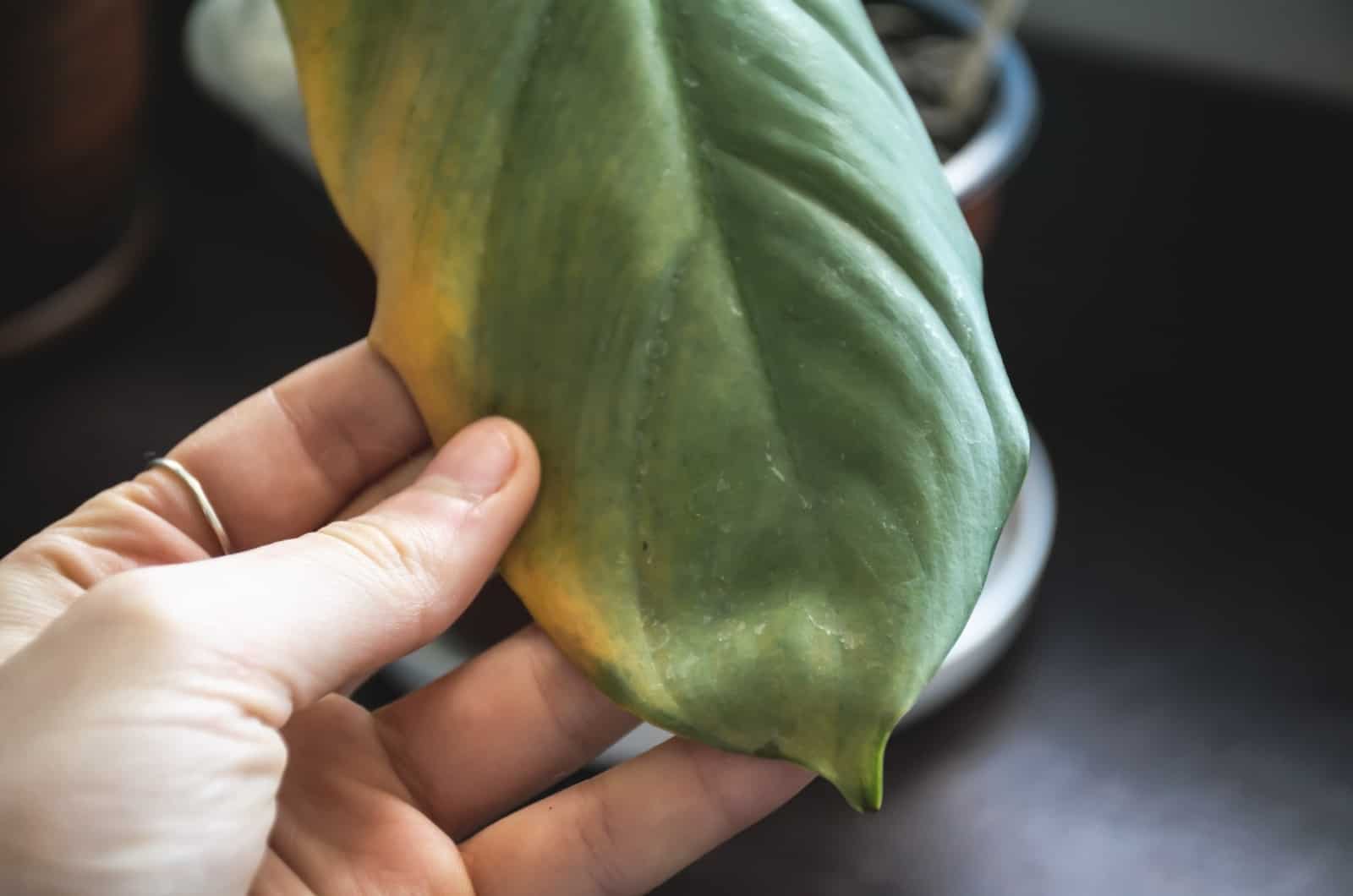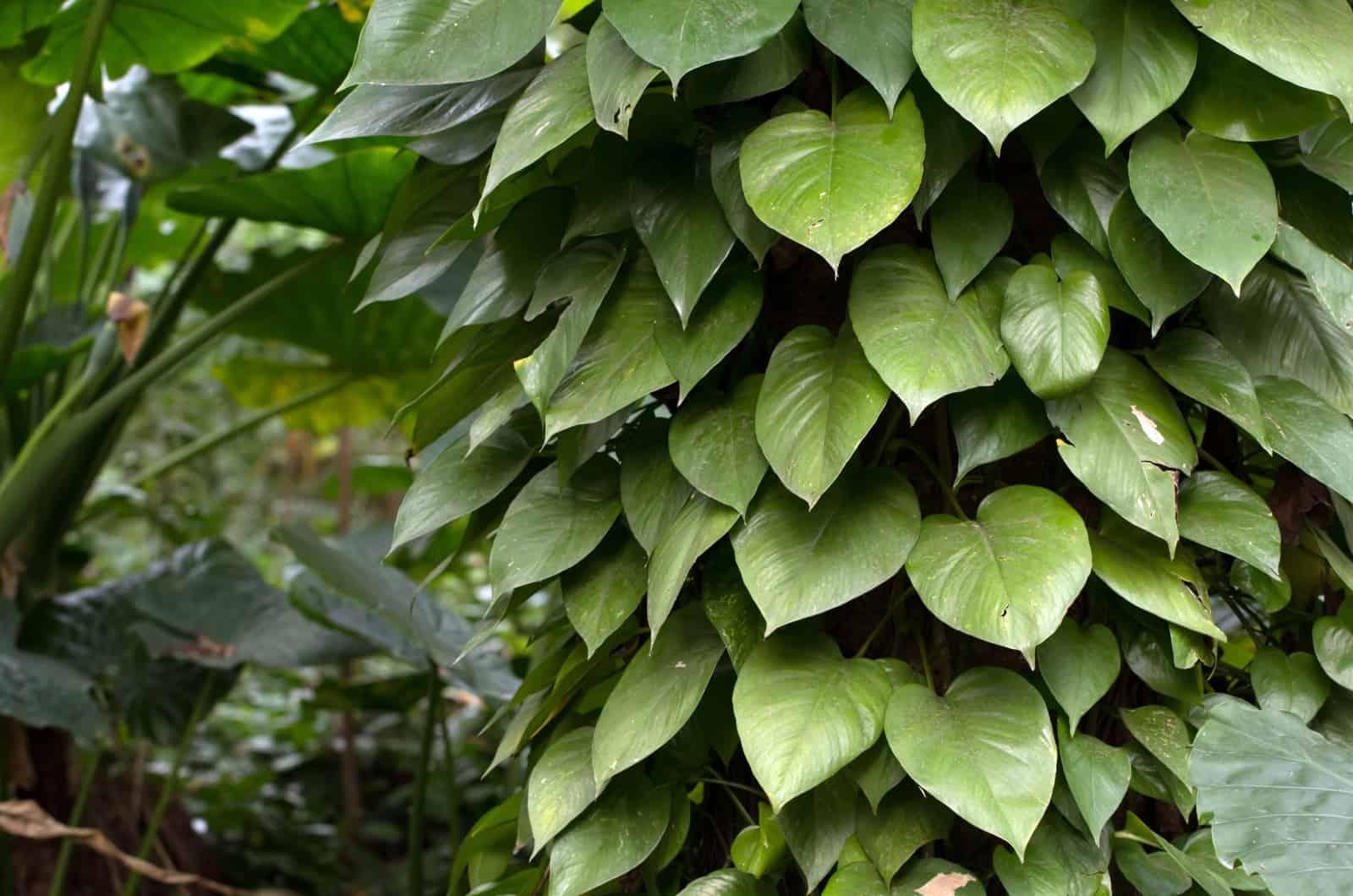Philodendrons are one of the most popular houseplants out there, and for some good reasons!
First of all, these are the easiest tropical plants that you can grow inside. If you are a beginner gardener, I would suggest that you get yourself some Philos. Their propagation is also straightforward, so you can use them for practicing.
Second of all, they are stunning!
There are so many philodendron varieties that can be grown indoors, and each one is special in its own way. Their large, green, and glossy leaves can make any room look more lively. With so many philodendron plants to choose from, I’m sure that everyone can find the one that suits their style.
Today, we are going to talk about philodendron care. So stay tuned to find out how to take care of these beautiful tropical plants.
Philodendron Care Guide
Before we dive into the plant care guide, I would like to mention that there are two types of philodendrons: climbing varieties and non-climbing varieties. The only difference is that you will have to provide some type of support for vining philodendrons since they use aerial roots to climb, while non-climbing ones can grow perfectly fine without any support.
Now, don’t get intimidated by this. You can simply install a trellis, moss pole, or some other moss pole alternatives. They also look great in hanging baskets!
Since we are talking about tropical plants, you’ll need to adapt your home’s environment to make it more like tropical regions. Of course, you don’t have to construct a rainforest in your home; all you need to do is locate a space with the right amount of light, warmth, and humidity.
They also need a certain type of potting soil, a routine for watering, and some fertilizers during the growing season for proper growth and development.
Warm temperatures, well-draining soil, high humidity, and watering when the top inch or two of the soil has dried out represent some of the basics when it comes to growing philodendrons indoors.
Let’s dive in!
Soil Requirements
Regardless of whether we are talking about pothos plants, monsteras, or any other tropical beauty; all of them like to grow in moist soil. However, there is a fine line between moist and soggy soil. Soggy soil is bad and can lead to root rot (a deadly fungal disease that can ruin your plant for good).
Soil plays a key role in drainage.
Philodendrons need to grow in well-draining potting mixes that are also porous and rich in nutrients. To improve drainage and guarantee proper aeration, choose an aroid soil mix or similar loamy and fertile soil types.
Perlite, pumice, orchid bark, compost based on loam and similar materials are some of the materials you can use to provide excellent aeration and drainage.
If you want to make your own potting soil, here are some great recipes:
• Prepare a 1:1 mixture of potting soil and perlite. While the potting soil will give enough nutrients and moisture retention to keep your plant healthy, perlite will provide aeration and drainage.
• You can combine 10% perlite, 30% perlite, 30% orchid bark, 30% peat moss, and a small amount of horticultural charcoal to remove contaminants.
The majority of Philos prefer growing in slightly acidic soil with pH levels between 5.0 and 6.0.
Water Requirements
Watering is a crucial part in this plant care guide. These plants like a lot of moisture. Still, you shouldn’t overdo it because it might lead to overwatering.
There are other factors that affect the watering schedule. This includes temperature, humidity, light conditions, and soil type. You will need to water the soil more frequently since warmer temperatures will encourage water evaporation.
If you grow your indoor plants in higher humidity, you might not have to water them as often since they can absorb moisture from the air.
In addition, they start growing vigorously at the beginning of the growing season, which immediately means that they will need more water. During winter, we often ease up on watering since these plants are not actively growing.
Ideally, you should water your plant when the top few inches of the soil dry out. Always check the soil before watering your plant again since it can be easily overwatered. Growing these plants in pots with drainage holes is also a must since they can drain out excess water quite quickly and prevent it from retaining in the soil.
Don’t forget to water your plants frequently because it can lead to underwatering, which is just as bad as overwatering. In this case, the soil will get too compact, which will prevent the roots absorbing nutrients and water upon the next watering. It will lead to stunted growth, wilting, and drooping.
Light Requirements
Since these plants originate from deep rainforests, they often grow under big trees and large leaves. This means that they are not exposed to direct sunlight.
In other words, philodendrons thrive in bright indirect light. You will have to find the perfect location that offers these light conditions.
I would recommend windows that face east because the early sun is not too harsh and won’t burn your philodendron even if it comes into direct contact with the sunlight.
However, you should keep it out of the afternoon sun because it is extremely strong and could potentially burn your plant.
For this reason, you should move it farther away from the window if you plan to keep it in a room that faces south or west so that direct sunlight won’t harm it.
Don’t worry if your apartment faces the north — we have a fix for that too!
Your plant’s growth will be stunted and it will become lanky and unsightly when exposed to low light levels. If you can’t find an ideal location that will provide them with plentiful indirect sunlight, you can always invest in a good set of grow lights.
You can find them on amazon or Etsy for relatively cheap prices.
Humidity Requirements
Philodendrons might not like intense lights, but they sure do love high humidity!
Most philodendrons thrive in humidity levels above 60%, while some can endure humidity around 50%. However, the higher the better!
As these are not the usual humidity levels around the house, you will have to find a way to improve humidity. Before you start, I would recommend buying a hygrometer to see the exact humidity in your house.
Here are some of the easiest methods to improve humidity:
Method 1: Group Your Plants
Grouping your other tropical plants, such as the Monstera deliciosa or philodendron species, to create a microclimate is the easiest way to raise humidity. As the water evaporates from the soil, it will raise the humidity levels around the plants.
Trust me, your plants will enjoy each other’s company!
Method 2: Buy A Humidifier
If you don’t mind spending a couple of bucks, then I would recommend you invest in a humidifier. This little apparatus can significantly increase humidity, which is why they are considered to be the most effective method.
Luckily, they are not as expensive as they used to be; you can find them for 20 bucks on Amazon or Etsy.
Method 3: Play With Pebbles
Creating a pebble tray is also a good method to boost humidity. The pebble tray method by itself won’t work if the humidity level in your home is too low.
But if you combine it with other techniques, you can increase humidity even more.
Pebble trays are reasonably priced, and they can make your pot even prettier. All you have to do is get a shallow pot, fill it with rocks and water, then put your philodendron on top of it.
Ensure that the plant’s roots are not submerged in the water.
Method 4: Put Your Plant In A Humid Room
People typically buy houseplants to put in living rooms or bedrooms.
However, bathrooms or kitchens might also benefit from having indoor plants. With the high rates of water evaporation in bathrooms and kitchens, they’ll be wonderful additions to these spaces. If you place your philodendron in these locations, it will receive lots of humidity.
Method 5: Misting
Another simple and cheap way to raise humidity is to spray or mist your plants. Spray some water over the leaves and let them dry for a while before misting them once again.
Spraying this plant twice a week is sufficient to prevent it from becoming dehydrated. Avoid misting this plant daily since too much water on the leaves can result in fungal diseases.
Temperature Requirements
Warmer temperatures are ideal for tropical plants, and pretty philodendrons are no exception.
The majority of philodendrons prefer growing in a temperature range of 65 to 85 degrees Fahrenheit.
Even slightly lower or higher temperatures won’t harm them, but temperatures below 50 degrees Fahrenheit will cause issues.
This is why they cannot be placed simply anywhere. First, check that there are no radiators, heating vents, or fireplaces close to your philodendron.
When selecting the ideal location, keep in mind that sudden changes in temperature can quickly damage your beautiful philodendron.
Additionally, stay away from areas near air conditioners and cooling vents because they are highly susceptible to cold damage.
Fertilizer Requirements
If you want to encourage new growth and new leaf production, you should fertilize philodendrons during the growing season. Only during the growing season does the philodendron plant show growth, which is why it needs feeding during this period.
I advise only adding fertilizer once a month because feeding it more frequently can lead to fertilizer burn.
You will need balanced liquid fertilizers that are rich in nitrogen. If you are using organic fertilizers or any other type suitable for Philos, remember to dilute them to half strength before use because it can be too harsh for your philodendron. Always follow the manufacturer’s instructions displayed on the packaging.
Don’t fertilize them during the winter season as they enter dormancy and don’t need fertilizer for growing.
Repotting
Another important aspect of philodendron maintenance is repotting.
These plants are not fast-growing, yet they still require repotting every two years or as soon as you notice that the roots are poking through the drainage holes.
Some philodendron varieties, such as the Imperial green philodendron, enjoy being rootbound, but if you want to accelerate its growth you should repot it more frequently.
Repotting is best done at the beginning of the season when the plant is actively developing, so that it has time to get used to its new container before the winter.
Increase the pot size only by an inch or two, as overly large pots encourage too much water retention, which can lead to overwatering.
Pruning & Cleaning
Growers always say that it is hard to prune those magnificent leaves, but you gotta do what you gotta do, especially if you are dealing with a climber that has taken up your entire room! You can also prune them to encourage new growth and development.
Damaged or discolored leaves should also be pruned. You shouldn’t forget to clean your philodendron. To remove the dust and give those dark green leaves the shine they deserve, you should use a moist cloth.
But remember to dry the leaves afterward, as moist foliage is a foundation for fungus. However, you can wipe the leaves to increase the humidity if you want to make your job easier.
That way, you won’t have to worry about anything while the leaves dry on their own. Just don’t make the humidity higher by misting them.
Propagation
To get new plants, you can always try propagation. Most likely the simplest and safest technique of propagation is using stem cuttings. This philodendron can be propagated in water or soil, and each method has its advantages.
Although soil propagation enables the plant to acclimate to the planting medium at the very beginning of its life, making it less prone to transplant shock, water-based propagation is quicker, safer, and overall more successful.
If you are a beginner gardener, here are step-by-step instructions for plant propagation:
Soil Propagation
Since there is less chance that the young plant will experience shock from repotting, we prefer to propagate in the soil.
Choosing a healthy stem with a length of 3-6 inches (7.5-15 cm) and some leaves is the first step. If the stem has aerial roots or nodes, the chances of success are higher.
Then, use a pair of sterilized shears to cut the stem below the leaf node; you don’t want to spread bacteria that could harm your plants. Take off the lowest leaves and only keep the top ones.
You can also dip the cutting in a rooting hormone before planting it in adequate soil. Place the tray in a warm location with lots of light. To boost humidity, you can cover the young plant with a plastic sheet or humidity dome.
The plant should establish its root system after a month, at which point you should repot it. You can’t see the roots, but you can slightly tug the plant, and if it doesn’t come out, it implies that the roots have developed and it is ready to be relocated.
Water Propagation
Compared to soil propagation, water propagation is much simpler.
Once more, you must take a healthy cutting in the same manner as for soil propagation. However, you’ll place this cutting in a glass container filled with water as opposed to putting it in soil.
The cutting should be kept in a warm spot, and the water should be changed every other day. Additionally, remember to mist the foliage because it requires moisture to grow; just make sure you don’t go overboard because you don’t want your new plant to have powdery mildew on its leaves.
After two to three weeks, new roots should start to form, at which point you should immediately repot the new plant.
Fresh soil with sufficient drainage and aeration should be added to the little pot. Then, place the pot in a location with indirect sunlight. From now on, you can enjoy seeing your Philo grow and develop!
Common Issues
Sadly, these low-maintenance plants can still run into some issues. We have already mentioned overwatering and underwatering, but there is also some other stuff that could potentially harm your plant.
Let’s look closer.
Pest Infestation
If you have a lot of indoor plants, you will probably experience pest infestations. In relatively small numbers, pests are not deadly, but if they establish a colony you’re in big trouble.
If you identify any pest species early enough, you can easily get rid of them and stop them from harming your beautiful philodendron.
It will take a long time to get rid of all the pests if the infestation gets bad.
Your philodendron‘s huge leaves are a tasty snack for aphids, mealybugs, and spider mites.
Spraying them with pesticides like horticultural oil or neem oil will quickly get rid of them.
However, if you’d rather use natural remedies, you can run the plant under a lot of water or use a cotton bud dipped in alcohol to get rid of the bugs. Alcohol should be used with caution since it could harm your philodendron.
Plant Diseases
These plants are not particularly susceptible to many diseases, but they are also not exactly disease-free.
Root rot is the most prevalent issue. Leaf spot is an uncommon occurrence unless another plant has been affected.
If your philodendron is overwatered, it will probably get root rot.
If you observe any of the signs of root rot, such as yellowing, browning, squishy soil, or an unpleasant odor, check the roots.
Use sanitized tools to remove the rotten roots of your philodendron. Repot the plant and apply fungicide.
Yellow Leaves
Yellow leaves might appear due to overwatering and underwatering. In addition, they can be caused by low humidity and inadequate light conditions — the plant is either kept in low light settings or it receives too much direct sunlight.
Brown Leaves
Browning of the leaves occurs due to temperature fluctuations. However, it can also be caused by overfertilization or watering issues — specifically when the plant is underwatered.
The Best Philodendron Varieties
These plants belong to the Araceae family, and most of them have similar plant care requirements. Now, there are over 400 different philodendrons. Therefore, you can choose philodendrons with variegations, smaller leaves, larger leaves, heart-shaped leaves, and many more!
Here are some of the best philodendrons:
• Heartleaf philodendron — with dark green, heart-shaped leaves and long vines, the Heartleaf philodendron is one of the most popular varieties. It is also known as the philodendron Micans.
• Philodendron Hederaceum ‘Brasil’ — this is a cultivar of the abovementioned species. It has heart-shaped leaves with a lime-green color.
• Split leaf philodendron — it produces stunning, enormous leaves with splits along the margins.
• Philodendron Selloum or Bipinnatifidum/Lacy tree philodendron — this is a large philodendron species that produces deep green, lobed leaves.
• Philodendron Pink Princess — also known as the philodendron Red Princess, it is a hybrid plant that produces leaves with pink patches.
• Philodendron Birkin — this species produces green leaves with thin white stripes on their surfaces.
• Philodendron Ring of Fire — it is a hybrid plant that produces leaves with a dark green color and creamy-white variegations.
To Sum Up
You see, philodendron care is relatively easy!
All you have to do is ensure that you give them just enough water to keep their soil moist, and also provide them with soil that is fertile, well-draining, and porous. They should be kept in places with lots of bright indirect light, warm temperatures, and high humidity.
Fertilize them during the growing season to encourage new growth, and propagate them so you can create a Philodendron empire!
That’s all, folks. I hope this article was helpful.
Until next time!

